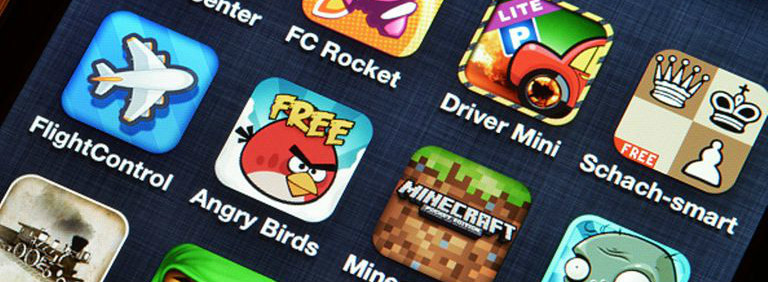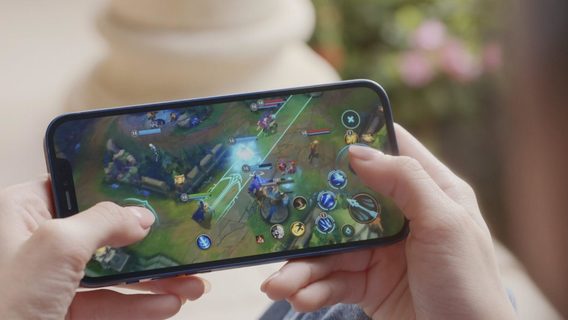How the mobile gaming industry has evolved

Mankind has always strived to make life easier by developing new technologies. Cell phones have firmly entered into everyday life, becoming not just a means of communication, but a full-fledged entertainment gadget with many functions. It is even hard to believe that the first phones did not have built-in games, or were equipped with them as a free add-on along with a calculator or alarm clock. For example, in 1994 Siemens released the Marathon model with Tetris installed, and in 1997 Nokia introduced the world to phones with Snake.
The development of mobile gaming with the first mobile OS
For several years, the gaming world and the phone world didn’t intersect… Until the first mobile OS appeared. The surge in popularity of cell phones helped companies realize that these devices had a great future. Consumers chose models with more games – the audience wanted new sensations and possibilities.
First steps to conquer the world with java applications
Nokia and Sun Microsystems were the first to realize that there was money to be made. Then the Java ME platform was developed, allowing you to install new games on the phone yourself. Nokia 3410 was already positioned as a game model when it was released, including the most popular titles at that time: Bantumi, Bumper, Link5, Snake II, Space Impact.
And the introduction of WAP protocol in the devices allowed the company to make an online catalog of games, where developers could put their products. Nokia not only received a considerable amount of money as royalties, but also earned the fame of the main manufacturer of phones with games. At the same time, some of the games were already installed for free, and others could be downloaded for a small fee.
The arrival of “titans” in the industry of mobile games and the way to earn money

The Internet was filled with sites where you could download java games. Of course, they were heavily peppered with a variety of ads and banners. For free downloads, users had to pay another way – to close the constantly opening ads and tolerate slow downloads.
Big gamemdevs such as Electronic Arts, Konami, Ubisoft came to the market. They quickly realized that you can make good money on mobile platforms – you just need to transfer their popular games to the phone. And it worked! Such big projects as Sims, NFS and others moved to small screens. This became possible thanks to the development of three-dimensional graphics, as well as the emergence of Android and iPhone OS (now iOS).
Developers of games for mobile platforms began to earn good money – now they didn’t just sell their applications. Games became more accessible, often free, but players had to pay for moving to new levels, buying weapons and cars. And if a user downloaded a game from a third-party site, malicious programs could be installed with it – the developer also received bonuses for this. It was not without advertising.
The second stage of development of games for mobile platforms
Every year smartphones became more powerful, and new opportunities in the development of mobile games opened up. Graphics, visualization and animation are already almost as good as computer games. But there were problems with the release of applications that could work on both iOS and Android. Many users even chose the OS based on the supported games. But this problem was soon solved.
The first games available on iOS and Android at the same time
Angry Birds is a game that won millions of hearts, as Angry Birds was played on both operating systems. It stunned the industry by demonstrating new possibilities of physics of games for smartphones, and still does not lose its popularity – several additions have already been released.
Temple Run is an endless runner, in which players long collected bonuses and coins, earning points. This adventure action is exciting, makes you compete with other players… and buy different in-game upgrades that allow you to move faster, get more power-ups and so on. Then many similar games were released, in which only the scenery and additional elements were changed.
Another bright representative is Clash of Clans, a multiplayer military strategy game. It seems that the famous “Age of Empires” has moved to phones. It is also worth mentioning the hype around Pokemon Go. This game is a real breakthrough in the mobile industry! It has already been downloaded by more than a billion people, bringing the creators fabulous money (although officially the application is free).
Monetization of mobile games

The mobile gaming market is growing and there are many reasons for that. It’s a gigantic industry that can bring in millions if a toy “shoots”. But they are monetized in different ways:
- Some make the game pay-to-play right away, counting on direct sales. Mostly, these are large publishers or promoted projects based on famous movies/series.
- Another opportunity to earn money is in-game purchases. Purchase of various game items, currency, game time. This is what modern mobile game developers emphasize, as it is convenient for both them and players. Not everyone is ready to pay immediately for something they haven’t played. Free installation allows players to evaluate the application, and then decide whether to accelerate their development in it by buying skills. If the player gets sucked in, they’ll pay!
- Advertising is another opportunity for publishers to make money. They broadcast 10-30 second commercials in the game and get income from it. Players also benefit from it. For example, for watching the clip they give special currency, which in normal circumstances can be obtained only for real money.
- Paid add-ons or expansions.
In general, the game industry for mobile platforms continues to develop. Improves graphics, physics, smartphones are becoming more powerful, and developers can create really cool projects. Any team or startup can join this business. The main thing is to find your niche and not to fill the game with advertising, at least at first.

 Download
Download 

